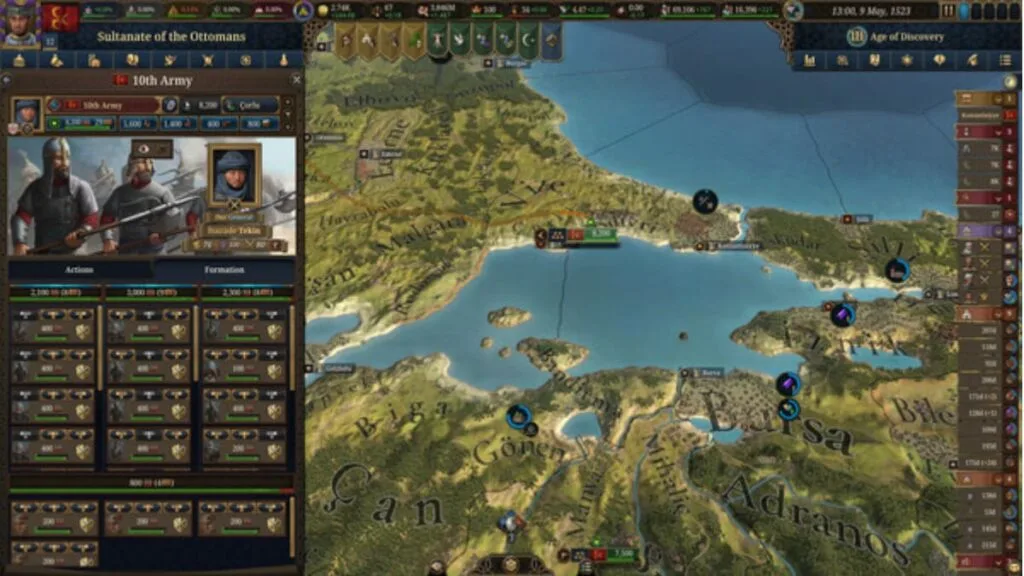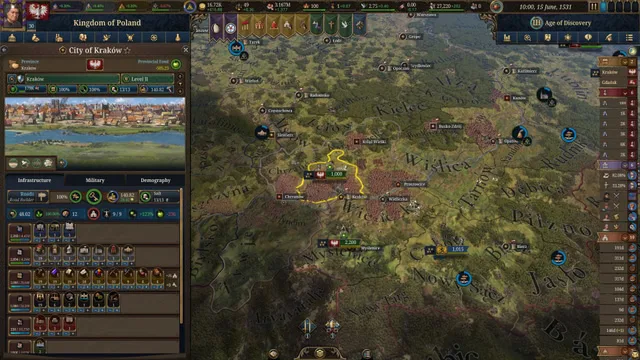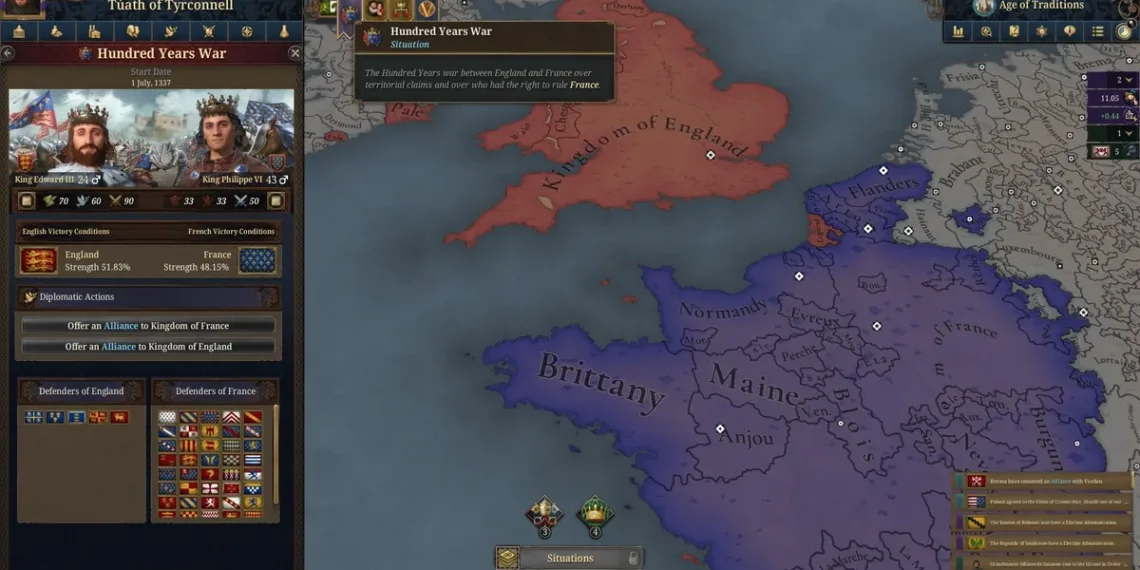Building roads in Europa Universalis 5 is fundamental to your empire’s success, connecting trade routes, enabling efficient military movement, and boosting regional development. Released November 4, 2025, after 12 years since EU4, Paradox’s newest grand strategy masterpiece introduces a sophisticated infrastructure system that rewards long-term planning.
Table of Contents
Europa Universalis 5 Road Types at a Glance
| Road Type | Movement Cost | Market Access Cost | Proximity Impact | Maintenance |
|---|---|---|---|---|
| Gravel Road | -25% | -10% | -20 | 0.01 Sand |
| Paved Road | -30% | -15% | -25 | 0.01 Sand, 0.01 Masonry |
| Modern Road | -35% | -20% | -30 | 0.01 Sand, 0.01 Masonry |
| Railroad | -80% | -25% | -35 | 0.01 Sand, 0.01 Masonry, 0.01 Steel |
Step-by-Step: Building Your First Road
Constructing roads in Europa Universalis 5 follows an intuitive process once you understand the interface:

Step 1: Navigate to the desired region requiring road construction. Roads connect regions rather than individual provinces, representing major transportation arteries.
Step 2: Click on the region to open the region menu panel on the left side of your screen.
Step 3: Select the Infrastructure tab, then click Roads from the available options.
Step 4: Choose your starting and ending regions. The side panel automatically displays all regions the road system passes through, including total construction costs.
Step 5: Once satisfied with the route and cost, begin construction.
Why Roads Matter More Than Ever
Roads provide multiple strategic advantages beyond simple aesthetics. They improve regional Control by reducing Proximity Costs to your capital, which translates to tangible gameplay benefits: increased income, stronger levy strength, faster Pop assimilation, and enhanced administrative efficiency.
Additionally, areas with roads gain significant bonuses to Institution Growth, Construction Speed, and Local Monthly Development Growth. These compound over centuries, making early infrastructure investment crucial for long-term dominance.
Understanding Proximity Impact
The Proximity Impact statistic represents how roads reduce administrative distance to your capital. Lower numbers mean tighter control, which becomes critical when managing sprawling empires. A region with -35 Proximity Impact from railroads effectively functions as if it’s geographically closer to your capital for governance purposes.
This mechanic makes infrastructure investment strategic rather than purely economic—distant colonies become more governable when connected via quality roads.
From Gravel to Steel: Road Evolution
Your infrastructure should evolve with your nation’s technological progress:
Early Game (1337-1500s): Gravel Roads provide basic connectivity at minimal cost. Focus on connecting capital regions to productive areas and strategic border fortifications.
Mid Game (1500s-1700s): Paved Roads become available with masonry production. Upgrade key trade routes and military corridors for improved logistics.
Late Game (1700s-1836): Modern Roads and eventually Railroads revolutionize your empire. The -80% movement cost from railroads enables rapid military response and explosive trade expansion.
Maintenance Considerations
While gravel roads require only sand, advanced infrastructure demands diverse resources. Plan resource acquisition accordingly—stockpiling masonry and steel prevents construction bottlenecks when upgrading road networks.
The monthly maintenance costs remain modest but accumulate across extensive road systems. Budget appropriately as your infrastructure expands.

Strategic Road Planning Tips
Connect production centers to markets first: Roads dramatically reduce Market Access Costs, directly increasing trade efficiency and income.
Build military highways: Connect your capital to border regions for rapid army deployment during wars.
Upgrade incrementally: Start with gravel roads everywhere, then selectively upgrade high-traffic routes rather than building premium roads everywhere immediately.
Consider terrain: Some regions naturally have higher movement costs. Prioritize road construction in mountainous or forested areas where movement penalties are steepest.
EU5’s Revolutionary Infrastructure Depth
Unlike EU4’s relatively abstract development system, Europa Universalis 5’s infrastructure mechanics integrate with the new population (“Pops”) system introduced from Victoria 3. Roads enable Pop migration between regions, facilitate cultural assimilation, and determine which markets your goods can reach efficiently.
This depth reflects EU5’s overall design philosophy: simulating every person on Earth and every aspect of pre-modern statecraft with unprecedented granularity.
For more Europa Universalis 5 guides, strategy tips, and gaming news, visit TechnoSports Strategy Gaming Hub.
Frequently Asked Questions
Q1: Can I build roads in enemy territory or do I need to own the regions?
You can only build roads within your own nation’s territory. However, once constructed, roads benefit both military movement and trade even when armies pass through them during wars. If you conquer regions with existing roads, those roads remain functional and provide their bonuses immediately upon annexation.
Q2: Should I build Gravel Roads everywhere or save money for higher-tier roads later?
Build Gravel Roads liberally in your early game—they’re inexpensive and provide immediate benefits to regional control and trade. You can upgrade them to Paved or Modern Roads later as technology and resources become available. The incremental approach is more efficient than waiting decades to afford premium roads everywhere at once.







